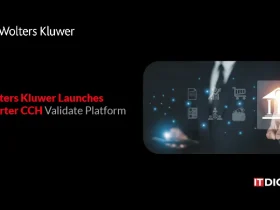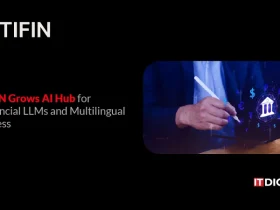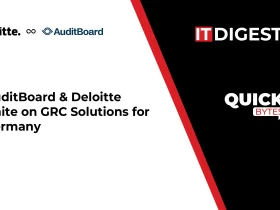Sometimes you need a deep crisis to start the internal revolution (Apple is another a great example), but changing everything when things go great is a different game.
Hi Stas, could you tell us a little about how your journey to Instreamatic got started?
It actually started in the advertising industry. About a decade or so I co-founded an ad agency in Europe. We focused on digital audio ads, working closely with Tier 1 brands like Porsche, Starbucks, and McDonalds, as well as global ad agencies like OMD and Mindshare. It became clear just how powerful creative audio ad campaigns could be at engaging audiences, but I – along with my cofounders – began thinking that the martech ecosystem wasn’t set up to capitalize on interactivity, personalization, and more granular data capture. We launched Instreamatic in 2015 and have been continually expanding the platform to modernize how brands and customers can best connect via voice.
As a MarTech platform, how does Instreamatic differ from anything else?
The Instreamatic voice marketing platform includes a uniquely powerful voice AI infrastructure enabling real-time conversations between brands and customers. The platform serves brands as an end-to-end solution for fully managing, measuring, and monetizing voice ads, including a programmatic ad exchange. The voice AI leverages natural language understanding to recognize the intents and emotions behind customers’ words. This enables actionable insights and iterative optimization for everything from ad campaigns to customer service and support.
Specifically, Instreamatic’s newly-launched Speaky platform offers a novel approach that lets customers easily share feedback with brands at any touchpoint (physical or digital) by leaving a brief, instant voice message. Instreamatic’s voice AI then analyzes those communications and creates real-time reports on the ideas and insights customers have to offer. Because speaking is such a faster and more natural form of communication than typing, customers provide feedback on their experiences that’s far more honest, forthcoming, and valuable than they share with traditional feedback channels.
How do you see voice marketing evolving over the years to come within the MarTech landscape?
It’s a really interesting time for voice. Brand marketers are now embracing the shift from Voice 1.0 (which you can define as the pioneering and now-ubiquitous “Big Three” voice platforms of Amazon’s Alexa, Apple’s Siri, and Google Assistant) to Voice 2.0. Voice 2.0 empowers brands to build and control their own voice infrastructures, and that’s an important distinction. Until recently, the voice MarTech landscape has been shaped around those Big Three platforms, which led the way in getting customers accustomed to interactive voice experiences and connecting with brands via natural conversation.
While I expect that Voice 1.0 will continue to thrive in the personal voice assistant space, brands themselves will build Voice 2.0 infrastructures to directly shape interactive customer experiences available across every one of their brand touchpoints. With Voice 1.0, all brand advertising and support must be spoken in the voices of the Big Three platforms, and brand creative must adhere to their guidelines. Voice 2.0 offers a profound contrast, empowering a brand to introduce its own signature voice, and to build customer recognition, familiarity, trust, and loyalty using whatever content that brand marketers decide upon.
Critically, Voice 2.0 also gives brand marketers direct control over the first-party and customer feedback data required to power the personalization that makes each customer’s experience uniquely meaningful to them.
Read More: IT Digest Interview with Matt Keating, Sales Director at VDX.tv
How can brands use the evolution to Voice 2.0 to show off their marketing creativity?
Brands backed by Voice 2.0 infrastructures will be able to reach customers as individuals and continue ongoing conversations from every brand touchpoint. The technology allows customers to speak with a brand via a native app, website, or social media channel, then go to the brand’s physical store location and launch the voice interface via QR code – and still be treated as the same familiar person across each of those experiences. Brands will give themselves voices as instantly recognizable as that of any real person, and that can express each brand’s unique character and values.
Creative content will leverage the best of brand interactions today, with the added element of the ability to listen, understand and respond to customers on a direct and human level. When invited and enabled, customers won’t hold back in sharing their feelings about their brand experiences, from product offers they like or don’t like to their positive or negative encounters with the brand. Throughout these interactions, brand marketers will be able to address customers’ needs on an emotional level, making them feel heard, tailoring offerings appropriately, and deepening their brand relationships via that powerful and very human communication.
Why is customer data from voice interactions particularly valuable for shaping marketing experiences?
The responses that customers share through their brand voice interactions inform brands as to their precise preferences, likes and dislikes. Voice platforms are able to analyze those responses, and remember those preferences to provide increasingly individualized and effective creative content. For example, voice ad campaigns can ensure ad relevance as soon as customers share their opinions on certain products or offers. In a medium known for repeating unwanted content to the point of annoyance, data-empowered voice platforms can make sure that customers only receive ad interactions that fit their interests, and never hear an unwelcome ad twice. By listening to and respecting customers’ wishes, brands can build closer relationships by showing customers the natural benefits of sharing their opinions.
This process of iterative improvements to tailored voice interactions optimizes voice experiences across customer support and feedback functions at all brand touchpoints as well, enabling brand marketers to enrich communication and deliver customer satisfaction ever more assuredly.
As a MarTech business leader, what metrics do you use to define success?
We look at two metrics to define success: engagement rate and quality/insights from voice. With our voice ad platform, we’re looking to consistently generate listener engagement rates of at least 5-10%. And then on the quality side, we’re looking to create experiences that resonate and that audiences want to be a part of. For example, we just got back from the EY Innovation Released conference, where EY’s lead partner for digital & business disruption told us that “Speaky outperformed other communication channels in terms of both quality and quantity” with their attendees. We look for the metrics to match up to the feedback of the experiences our martech solutions deliver.
What is the top MarTech application or solution you use at Instreamatic itself?
We are particularly big fans of MediaRadar, the advertising intelligence platform.
What advice would you give to someone launching a startup in the MarTech space?
Customer development is so, so important in the beginning. Make sure you can sell the promise of the product first—before you start building it. This way you can ship what customers want and save a lot of time on finding product-market fit.
Do you have a favorite book on leadership you’d recommend?
I have a couple I’d strongly recommend. Jack: Straight from the Gut paired with Jacked Up: The Inside Story of How Jack Welch Talked GE Into Becoming the World’s Greatest Company are great—and interesting—reads on leadership. Starting from the bottom and making it to the top of an old and successful organization, and then changing it completely and bringing it to one of the most valuable companies in the world, is a hell of a task. Sometimes you need a deep crisis to start the internal revolution (Apple is another a great example), but changing everything when things go great is a different game.
Who’s one person that you would like to see featured here?
Brian Sathianathan would bring great perspective here. He’s the Chief Digital Officer and a co-founder at Iterate.ai working on low-code solutions that brands and agencies use to (quickly) build applications for innovative customer experiences and other marketing-centric use cases. He also hosts the popular This Week in Innovation podcast
Thanks, Stas!


































